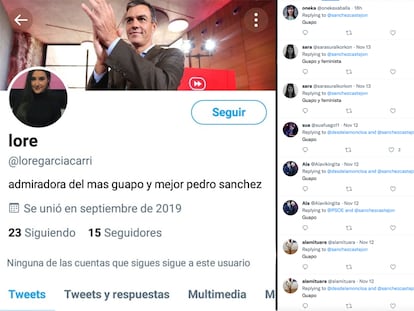Twitter includes Spain in experiment to detect misleading tweets
Users now have the option to flag content considered to misrepresent the truth as part of the social media giant’s effort to crack down on fake news

Starting on Monday, more Twitter users can flag tweets that they consider to be misleading. The social media company, which began testing the new safety feature in August in the United States, South Korea and Australia, has decided to extend it to Spain, Brazil and the Philippines in order to test the tool in markets where the main language is not English.
In the six months since the feature has been available, Twitter has “received around three million reports from you all, calling out Tweets that violate our policies and helping us understand new misinformation trends.”
Today we're expanding this test feature to folks tweeting from Brazil, Spain, or the Philippines. Till now we've received around 3M reports from you all, calling out Tweets that violate our policies & helping us understand new misinformation trends.
— Twitter Safety (@TwitterSafety) January 17, 2022
Stay tuned for more to come. https://t.co/wB3P66Dl1Q
Until now, selecting the three-dot icon in the upper right-hand corner of a tweet allowed users to report a message containing abusive or harmful content, spam or expressing suicidal intentions, among others. This tool helps the company detect messages that violate Twitter rules.
With the new feature, users in Spain can now also report a tweet as misleading. Twitter will ask the user about the type of information involved – whether it deals with politics, health or something else. Once the report has been completed, the user may mute or block the user who posted the message.
Twitter believes that political and health-related information is more likely to be the target of misleading information. In recent years, fake news has grown exponentially during election campaigns, and since the Covid-19 pandemic broke out in early 2020, there has been a similar explosion of misinformation about the virus and about vaccines.
Twitter now wants to speed up its detection of misleading information by getting users to actively participate in the effort, along with the algorithms and automated tools that scan posts for inappropriate content.
The company is hoping that the combined detection of misleading content and narratives will help create related Moments – curated stories showcasing current trending issues, and which is this case could help deliver information about popular hoaxes. This is another tool that was rolled out recently to fight misinformation on social media.
Tu suscripción se está usando en otro dispositivo
¿Quieres añadir otro usuario a tu suscripción?
Si continúas leyendo en este dispositivo, no se podrá leer en el otro.
FlechaTu suscripción se está usando en otro dispositivo y solo puedes acceder a EL PAÍS desde un dispositivo a la vez.
Si quieres compartir tu cuenta, cambia tu suscripción a la modalidad Premium, así podrás añadir otro usuario. Cada uno accederá con su propia cuenta de email, lo que os permitirá personalizar vuestra experiencia en EL PAÍS.
¿Tienes una suscripción de empresa? Accede aquí para contratar más cuentas.
En el caso de no saber quién está usando tu cuenta, te recomendamos cambiar tu contraseña aquí.
Si decides continuar compartiendo tu cuenta, este mensaje se mostrará en tu dispositivo y en el de la otra persona que está usando tu cuenta de forma indefinida, afectando a tu experiencia de lectura. Puedes consultar aquí los términos y condiciones de la suscripción digital.











































